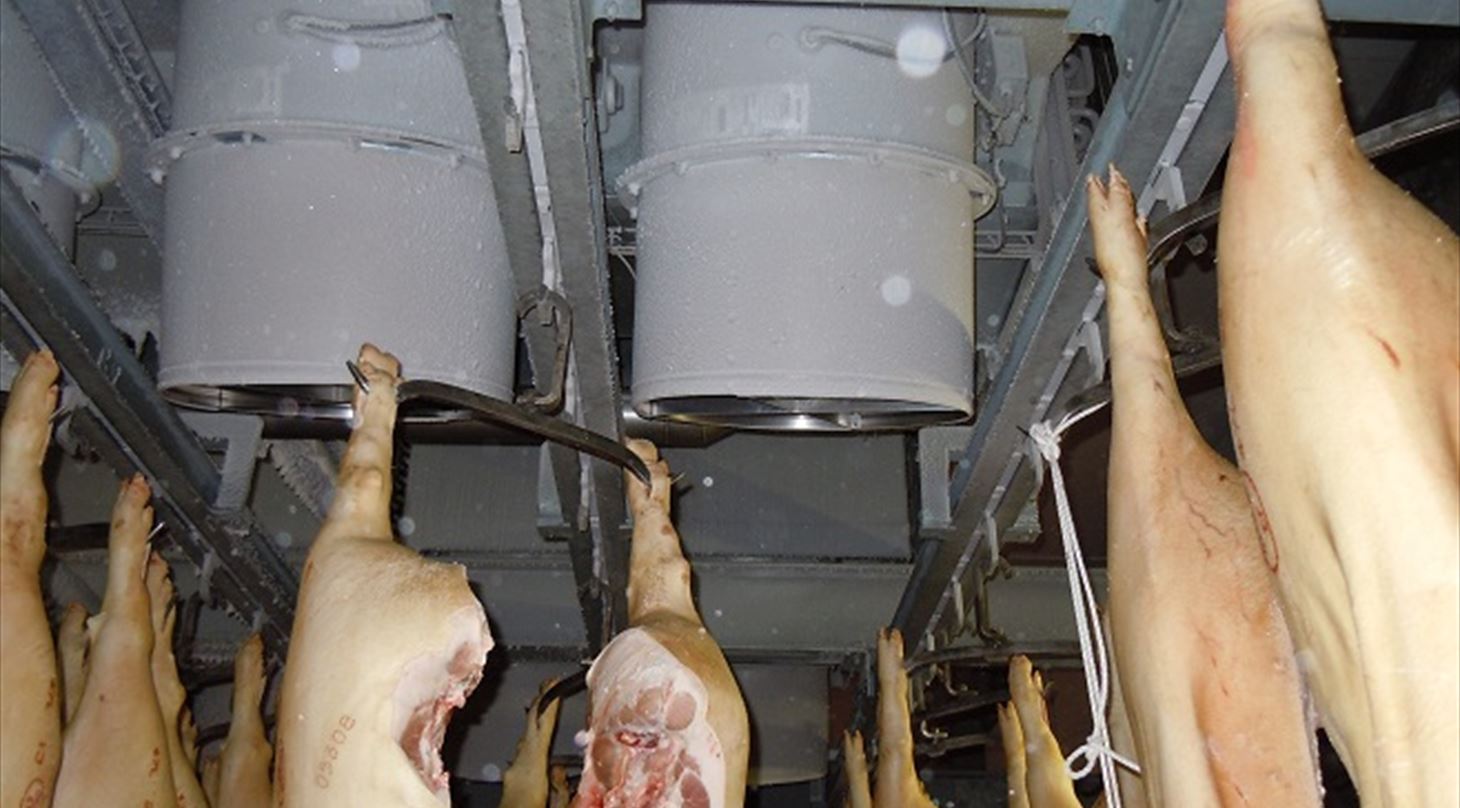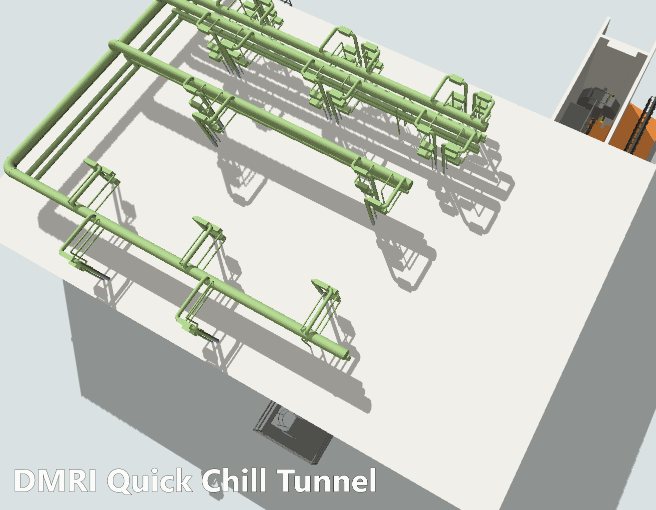
Design of carcass chilling facilities - with optimal meat quality output
Designing carcass chilling facilities for optimal meat quality output is our specialty at DMRI
We bring our unique expertise to the table, whether you're embarking on a new chilling process or enhancing an existing one. Our chilling processes are meticulously crafted to achieve a chill loss of 0.7% to 1.3%, tailored to your specific requirements, whether you opt for a hard or soft process. Moreover, we stand by our commitment with a chill loss guarantee.
Constructing or upgrading chilling facilities demands precise equipment sizing and design to ensure the right process parameters. Drawing from our extensive experience, we excel in extracting heat from hot carcasses efficiently, mitigating potential design flaws, and optimizing project expenditures without compromising on quality.
Engaging DMRI for your project means accessing proven technical specifications validated by our own engineers' field expertise. We'll guide you through contractor and supplier selection, ensuring adherence to our rigorous process standards.
Upon project completion, DMRI conducts thorough performance testing to identify any necessary contractor adjustments. From inception to conclusion, we're with you every step of the way:
DMRI's designs deliver:
- Enhanced meat quality
- Minimal chill loss (evaporative loss during chilling)
- Reduced drip loss (meat juice in packaging)
- Lower operating costs
- Ample chilling capacity
- Precise final product temperatures
- Minimal building condensation (no dripping)
- Structural durability
Improve your next carcass chilling project

The water that evaporates from the skin and meat of the carcasses poses a significant loss in yields. Analysis of sales numbers from various pork slaughter facilities determined the average value of 1% of chill loss to be approx. 1.3 EUR per carcass. In one case, one of our customers running 700 pigs/hour in a two shift operation was able to increase yearly sales of approx. 3,500,000 EUR by reducing their chill loss with 1% by refurbishing their chilling process using DMRI’s specifications. |
New improved aesthetic design of the quick chill tunnel
Based on the average-sized carcass, DMRI can provide
- Technical specifications encompassing:
- Simulation of thermal processes
- Design of evaporators
- Determination of heat transfer area [m2]
- Airflow rates [m3/h]
- Process duration (impacting required space)
- Air temperature control
- Design and operation of refrigeration valves
- Defrost scheduling
- Fan control programming
- Sizing of refrigeration equipment
- Determination of insulation requirements
- Implementation of air separation systems for different temperature zones
- Structural specifications for the facility, including:
- Insulated and heated flooring structures
- Requirements for vapor barriers
- Penetrations in walls for pipes and cables
- Installation of equipment support columns to prevent thermal bridging
- Interface of insulated panels with concrete subfloors to maintain vapor barrier integrity
- Proper integration with neighboring buildings
- Layout drawings detailing the placement of evaporators
- Creation of 3D facility renderings
- Ongoing consultation and collaboration with local contractors on behalf of facility owners
- Supervision of construction and installation on-site
- Performance testing to ensure functionality
RECENT CHILLING DESIGN PROJECTS FOR HOT CARCASSES
| Customer | Country | Task | Year |
| Goodvalley | Poland | Chilling process design for an existing slaughter facility | 2022 |
| Esfosa | Spain | Design of new blastchiller and equalizing areas | 2015/2019 |
| Mexico | Greenfield design of blastchiller and equalizing areas | 2018/2019 | |
| Daejeon Chungnam | Korea | Greenfield design of blastchiller and equalizing areas | 2017/2019 |
Mexico | Greenfield design of blastchiller and equalizing areas |
2017/2018 | |
| TICAN | Denmark | Refurbishment of existing blastchiller and equalizing areas | 2013/2014 |
| Danish Crown Blans | Denmark | Refurbishment of existing blastchiller and equalizing areas | 2008/2009 |
| Danish Crown Horsens | Denmark | Greenfield design of blastchiller and equalizing areas | 2001/2004 |